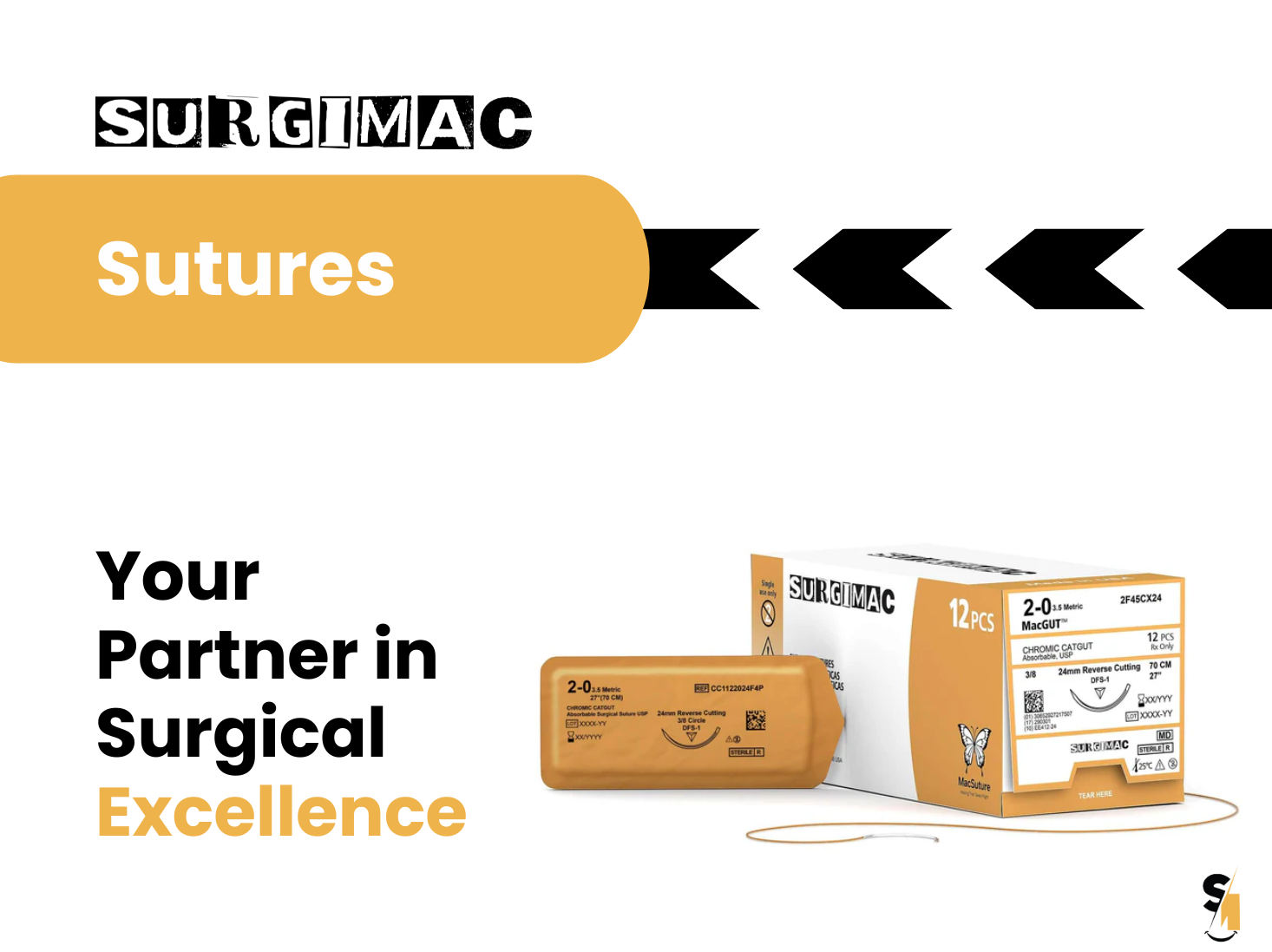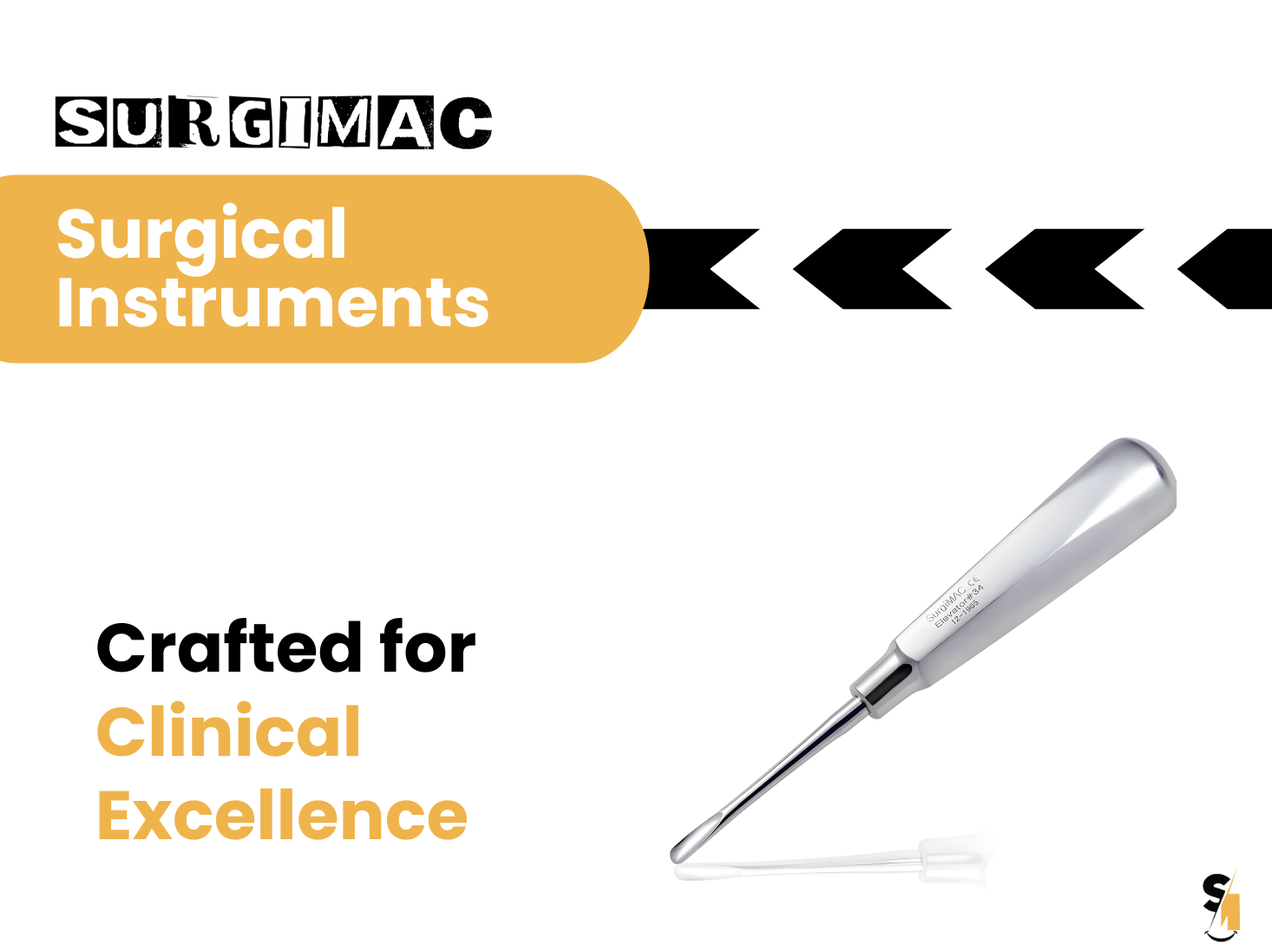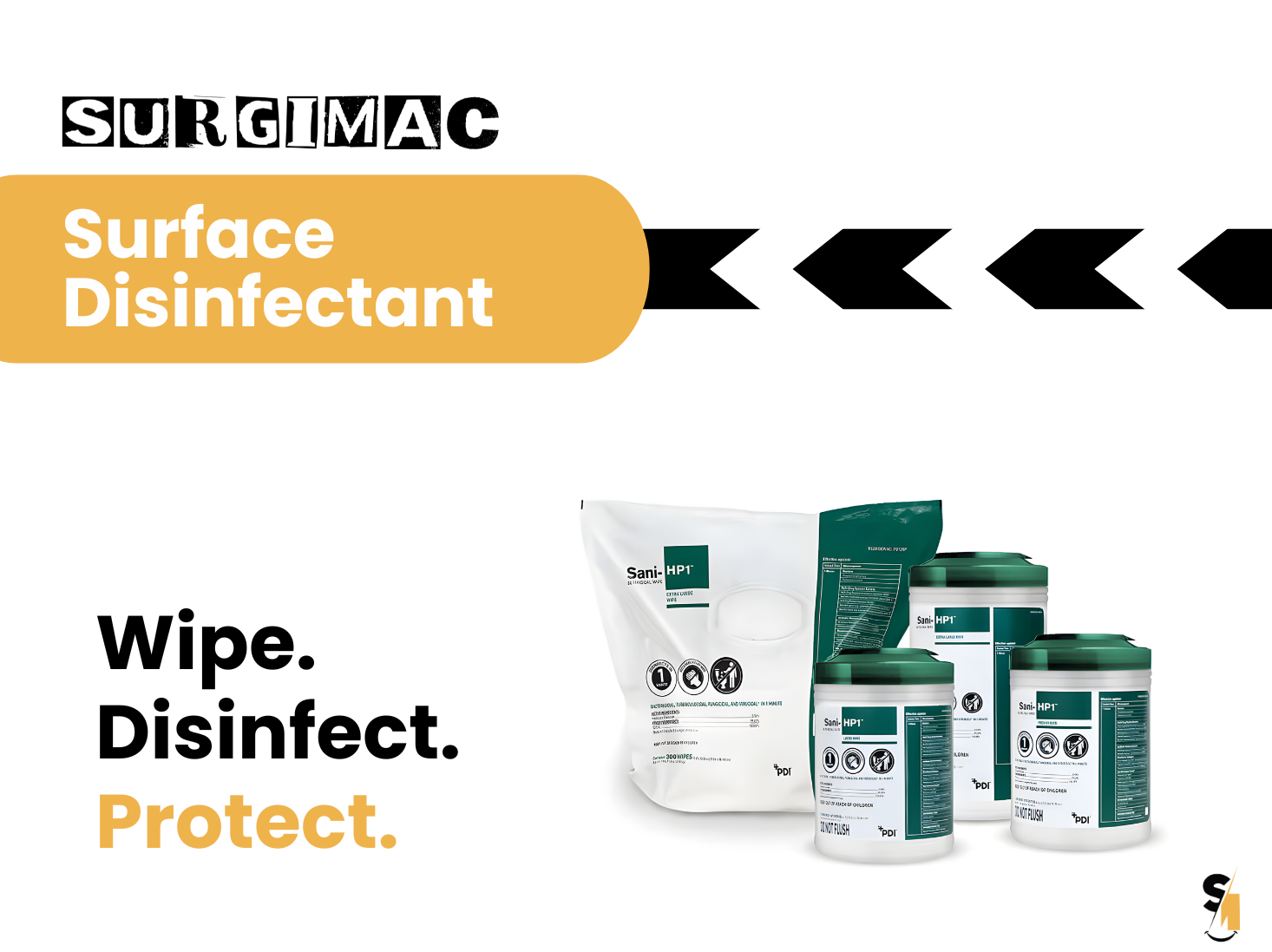Keep your clinic safe with Dental PPE. Learn best practices for dental hygiene, from proper glove use to reliable Surgimac and MacSuture protective gear.
Patient safety is built on trust, and that trust begins with a sterile environment. Every procedure, from ultrasonic scaling to drilling, can generate microscopic aerosols, creating an invisible risk for your team and your patients. This is why a stringent Dental PPE protocol isn't just a good idea—it's essential. Your equipment is the first and most effective line of defense. We'll cover the key strategies for maintaining clinic hygiene, focusing on critical gear like high-quality nitrile gloves and protective disposable lab coats from trusted brands like SurgiMac, so you can work with complete confidence.

Importance of PPE in Dental Clinics
Personal protective equipment (PPE) is crucial for safeguarding dental professionals against exposure to infectious agents. High-quality disposable gloves, such as Nitrile Exam Gloves, provide excellent protection while allowing for dexterity during procedures. Similarly, SMS Disposable Lab Coats offer a barrier against contaminants, ensuring that your clothing remains clean and reducing the risk of cross-contamination.
Types of PPE and Their Uses
Understanding the types of PPE available and their specific uses is vital for maintaining hygiene. Here are five common types of PPE used in dental practices:
-
Gloves: Essential for preventing the transfer of pathogens, nitrile gloves are a preferred choice due to their durability and comfort.
-
Masks: Surgical masks protect against inhaling infectious droplets and are crucial during patient interactions.
-
Gowns or Lab Coats: Protective clothing shields the body from contamination. Disposable lab coats are particularly useful for easy disposal after procedures.
-
Face Shields: These provide an extra layer of protection for the eyes, nose, and mouth.
-
Hair Covers: Hair protection, such as bouffant caps, minimizes the risk of contaminants entering the surgical field. The Lightweight Hair Cover Bouffant Cap offers a practical solution.
PPE Maintenance and Best Practices
Proper maintenance of PPE is essential to ensure its effectiveness. Always check for tears or punctures before use and ensure that all equipment is stored in a clean, dry place. Regularly review and replace your PPE stock to avoid using outdated or compromised materials.
For more information on high-quality PPE products and how to maintain hygiene in your clinic, explore SurgiMac’s MacSafe Collection. Ensuring your dental practice is equipped with the right protective gear not only safeguards your health but also enhances the overall quality of care you provide to your patients.

FAQs Regarding PPE Products
What is Personal Protective Equipment (PPE)?
PPE, short for Personal Protective Equipment, in health care means special clothing or equipment donned by health care professionals to prevent exposure to health and safety hazards. These may be infectious agents, chemicals, and other forms of environmental hazards. A good working environment for health care workers, patients, and visitors requires the use of PPE.
Breaking Down the Term: 'Personal,' 'Protective,' and 'Equipment'
PPE stands for Personal Protective Equipment. This term refers to the collection of protective gear designed to protect workers from the dangers of the health care environment.
Why is Dental PPE a Non-Negotiable for Your Practice?
PPE is important for several reasons:
-
Protection from Infections: The risk of infections between healthcare workers and patients, especially in the case of contagious diseases, is decreased.
-
Patient Safety: PPE ensures that a patient's environment is safe since it prevents the spread of disease-causing pathogens, particularly to patients with low immunity.
-
Adherence to Laws and Regulatory Requirements: Health facilities can be kept safe and avoid compensating cases in hospitals if healthcare workers adhere to the rules guiding the use of PPE. The proper use of PPE ensures that health facilities meet established accreditation requirements.
The High Risk of Aerosols in Dentistry
In any dental practice, the air is filled with more than just conversation. Many common procedures generate aerosols—tiny airborne particles that can linger and travel. According to research from Dimensions of Dental Hygiene, this puts dental hygienists and other clinical staff at a high risk for exposure to infectious agents. These microscopic particles can carry bacteria and viruses, making stringent infection control not just a best practice, but an absolute necessity for protecting both your team and your patients from potential transmission within the clinic.
The sources of these aerosols are varied and sometimes surprising. While they can certainly come from a patient breathing, speaking, or coughing, many are created by the tools of the trade. For instance, an ultrasonic scaler generates aerosols before it even makes contact with the patient's mouth. Once a procedure begins, instruments can mix with saliva or blood, creating contaminated particles that become airborne. This constant potential for aerosol generation means that every patient interaction requires a proactive approach to safety and hygiene in your practice.
To effectively manage these risks, your team's personal protective equipment (PPE) is your first and best line of defense. This goes beyond a simple mask. For optimal protection against splatter and airborne particles, it's recommended to use both goggles and a face shield. Creating a complete barrier is key to minimizing exposure. Ensuring your clinic is always stocked with high-quality, reliable supplies, from MacSafe protective gear to sterile MacSuture products, allows your team to work confidently and safely, knowing they are well-protected against the invisible risks in the air.
Your Checklist: Essential Types of Dental PPE
The most common types of PPE used in health settings are:
-
Sleeves: Prevent the contamination of hands and transmission by pathogens.
-
Masks: These include surgical masks and N95 respirators, which filter out airborne particles and prevent transmission through respiratory droplets.
-
Gowns: Provide a barrier against fluids and contaminants, protecting the skin and clothing of healthcare workers.
-
Face Shields: Protect the face from splashes and sprays of infectious material, adding another layer of protection.
-
Protective Clothing: This includes garments like coveralls and booties, which protect employees from exposure to harmful substances or infectious agents.
Every type of PPE has been engineered to address specific risks, and proper selection and use of PPE are vital for protecting against infections in any healthcare setting.
Related Links
Sources and Related Content
- Centers for Disease Control and Prevention (CDC)
- American Dental Association (ADA)
- Journal of the American Dental Association
- Dental Tribune International
- PubMed Central (PMC)
Gloves: Patient Care, Surgical, and Utility
Gloves are your first and most critical line of defense against contamination. Think of them as the most important barrier between you and potential pathogens. In a dental setting, not all gloves are created equal; they fall into three main categories. Patient care gloves are your go-to for any work inside a patient's mouth. For more invasive procedures like oral surgery, you must use sterile surgical gloves. Finally, heavy-duty utility gloves are reserved for tasks outside of direct patient care, such as cleaning and disinfecting the treatment room, handling contaminated instruments, and working with chemicals. Using the right glove for the right task is fundamental to a solid infection control strategy.
Masks and Respirators: Understanding the Difference
While often used interchangeably in conversation, surgical masks and N95 respirators serve different protective functions. A surgical mask is designed to protect you from large droplets, splashes, and sprays, which is why a snug fit without any gaps is so important. They primarily prevent the wearer from spreading respiratory droplets. An N95 respirator, on the other hand, offers a higher level of protection by filtering out very small airborne particles, or aerosols. To be effective, an N95 must form a tight seal against your face and has to be professionally fit-tested to ensure no airborne particles can leak in around the edges.
Eye Protection: Goggles and Face Shields
Protecting your eyes is a non-negotiable part of dental safety protocols, as mandated by OSHA. Your options are generally goggles or a full-face shield. Goggles should fit snugly against your face, creating a seal to protect you from all angles, and they should comfortably fit over any prescription glasses you wear. A face shield offers broader protection, covering your eyes, nose, mouth, and forehead from splashes and spatter. A good face shield should wrap around the sides of your face and extend below your chin, providing comprehensive coverage for your entire face during procedures that generate significant aerosols or fluids.
Protective Clothing: Gowns and Lab Coats
Your everyday scrubs are great for comfort, but they often don't provide enough of a barrier against contaminants. That's where protective clothing like gowns and lab coats comes in. A proper gown should fully cover your arms, torso, and personal clothing, acting as a shield against splashes and sprays. The best options are disposable gowns with long sleeves, a solid front, and a high neck to ensure maximum coverage. Using high-quality protective apparel is a simple yet effective step to prevent carrying contaminants from the treatment room into other areas of the office or even home with you.
When and How to Change Your PPE
Knowing when to change your PPE is just as important as wearing it correctly. The cardinal rule is to use a fresh set of PPE for every single patient. This includes your gloves, mask, and any disposable protective clothing. Reusing items between appointments creates a direct path for cross-contamination, putting both you and your patients at risk. Furthermore, you should change your PPE immediately if it becomes visibly soiled or compromised in any way during a procedure. For example, if a glove tears or your gown gets splashed, don't wait until the appointment is over. Pausing to change into fresh gear is a critical safety measure that maintains the integrity of your sterile environment and demonstrates a commitment to the highest standards of care.
The Critical Role of Handwashing with Glove Use
It’s a common misconception that wearing gloves means you can skip handwashing, but that couldn't be further from the truth. Gloves are an excellent barrier, but they are not a substitute for proper hand hygiene. The CDC is very clear on this: you must wash your hands with soap and water or use an alcohol-based hand sanitizer immediately before putting on a fresh pair of gloves. After the procedure is complete and you’ve removed your gloves, you must wash your hands again right away. This practice protects you from any microscopic tears or defects in the gloves and prevents the transfer of microbes from your hands to the patient and vice-versa.
The Correct Order for Removing (Doffing) PPE
How you take off your PPE is crucial for preventing self-contamination. There is a specific sequence designed to minimize your contact with soiled surfaces, moving from the most contaminated items to the least. The correct doffing order is as follows: first, remove your gloves. Next, take off your face shield or goggles, handling them by the clean headband or earpieces. After that, remove your gown or lab coat by carefully rolling it away from your body. The very last item to be removed is your mask or respirator, which you should do by handling only the straps or ties. Following this sequence methodically helps ensure that the contaminants you were protected from during the procedure stay on the PPE and don't end up on you.
Safe Work Practices and PPE Disposal
Once your PPE has done its job, getting rid of it safely is the final step. Fortunately, for most dental practices, this process is straightforward. According to the CDC, the majority of used PPE, including items like gloves, masks, and disposable gowns, is not considered regulated medical waste. This means it can typically be disposed of in the regular trash. Of course, you should always adhere to your local and state regulations for waste disposal, but in most cases, special biohazard bags aren't necessary for these items. This simplifies cleanup and allows your team to maintain a safe and efficient workflow without overly complicated disposal procedures.
Understanding PPE Regulations and Employer Responsibilities
As a dental professional, it's important to know that the PPE you use meets specific safety standards. Legitimate PPE must carry a "CE marking," which indicates it conforms with health and safety standards, and should come with an instruction manual in the local language. It is the employer's responsibility to assess workplace hazards and provide the appropriate PPE to eliminate or reduce those risks. This means supplying your team with properly certified equipment that fits well and is suited for the tasks at hand. At SurgiMac, we ensure all our dental and surgical supplies, from our MacSafe protective apparel to our MacSuture line, meet rigorous quality and safety regulations, so you can trust you are providing your team with reliable protection.
Key Takeaways
-
Treat PPE as your primary defense: Every dental procedure generates invisible risks from aerosols and splatter, making a complete set of protective equipment essential for safeguarding your team and patients.
-
Match your protective gear to the procedure: Using the correct type of glove, mask, or gown is fundamental to effective infection control. Stocking your practice with reliable supplies from brands like SurgiMac ensures you have the right equipment for every task.
-
Master your PPE routine for maximum safety: Proper technique is just as critical as the gear itself. Always change PPE between patients, practice diligent hand hygiene, and follow the correct removal sequence to prevent cross-contamination.
Related Articles









